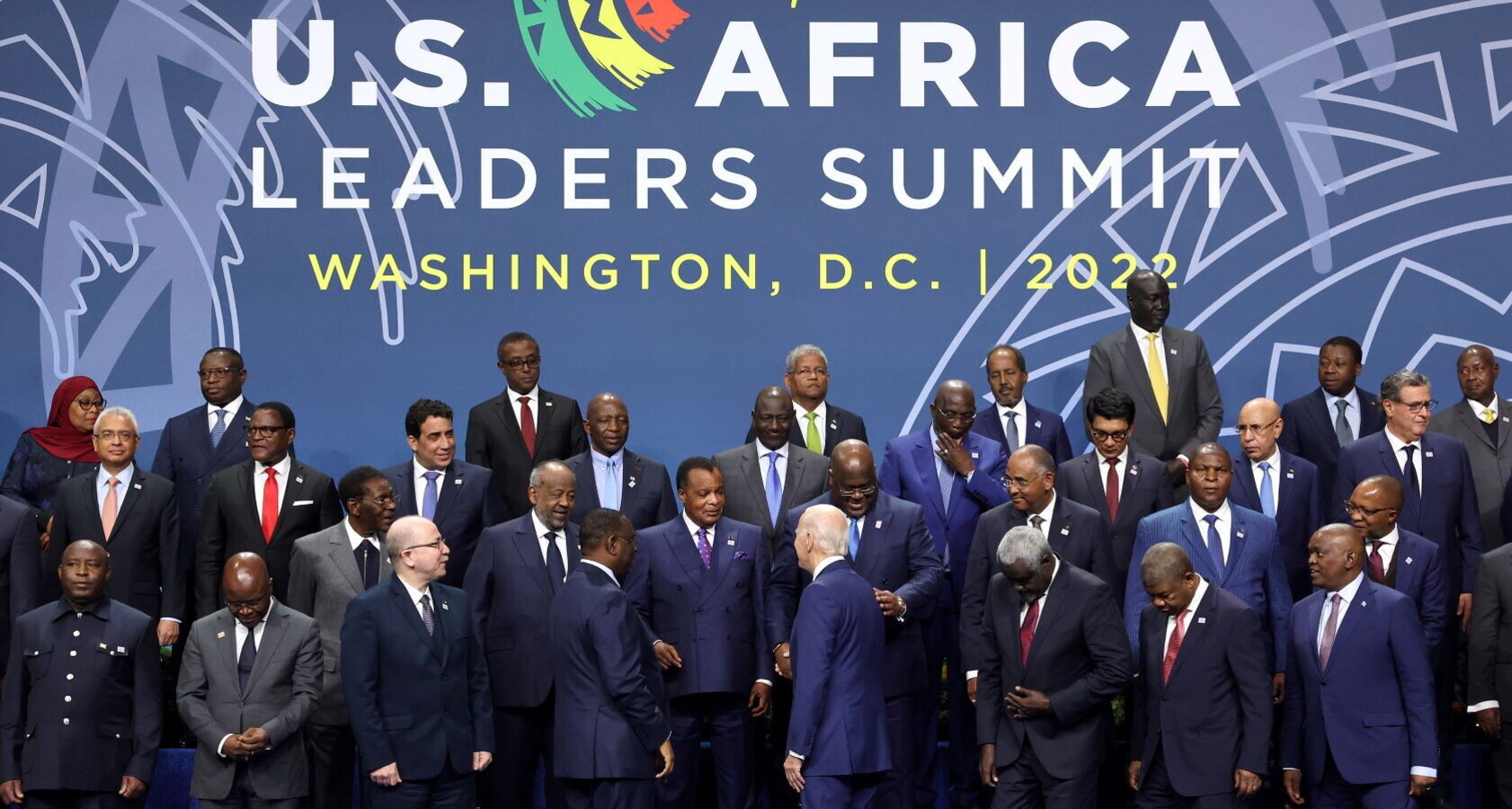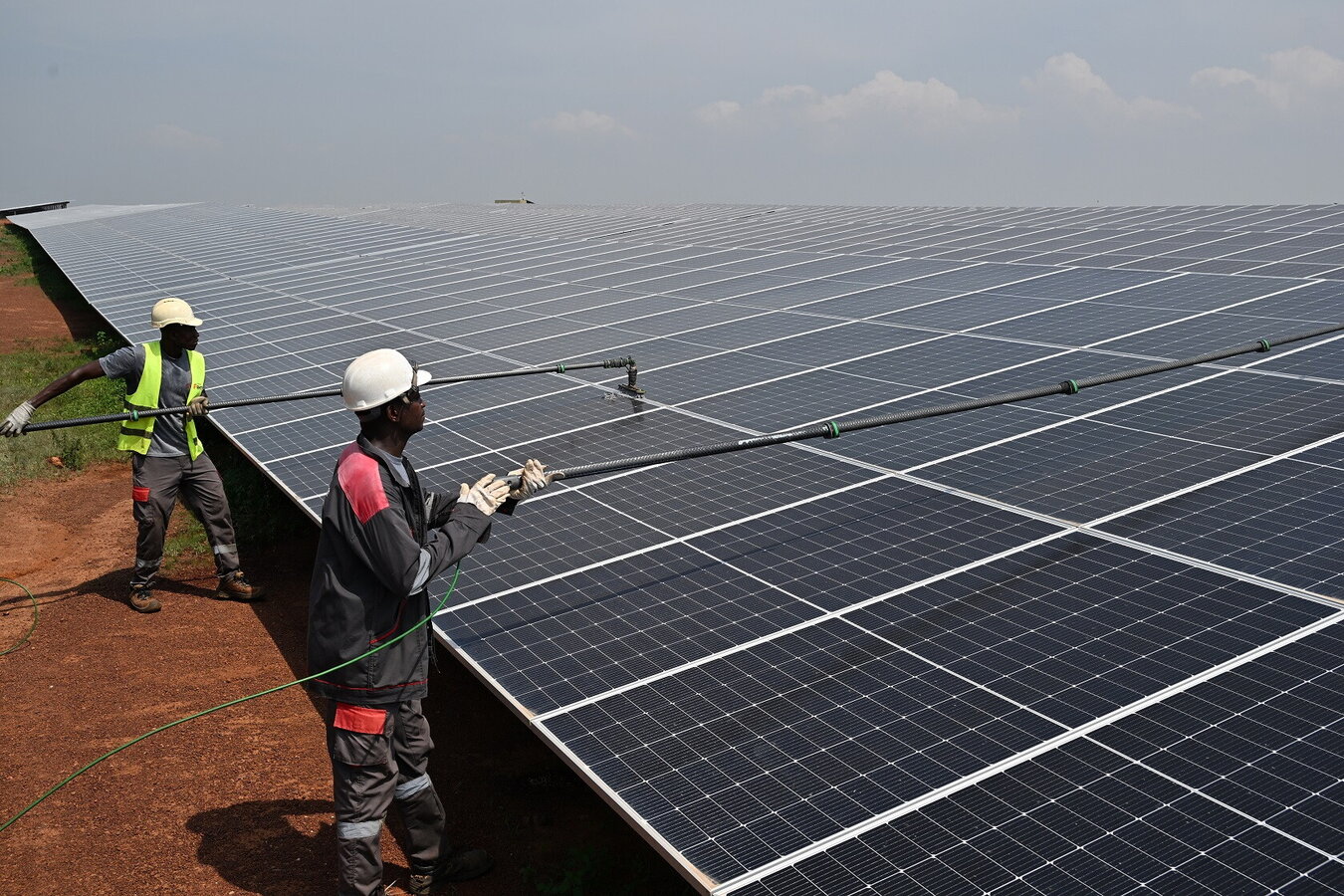
Energy
The New Energy of the Us in Africa
The United States is revitalizing relations with Africa in a context of strong international competition, with a changed approach that aims at collaboration among equals. At stake there are (also) the abundant natural resources—especially critical minerals and rare earth elements—fundamental for the energy transition: a bipartisan interest among the political forces that aim to position the United States as a global leader in decarbonization. In the background are the November US presidential elections. his article was originally published in Italian on April 4, 2024
12 minT
he issue of redefining the relationship with Africa has been concretely addressed by the current US administration. This is not an isolated case, given that, since the outbreak of the pandemic, a multitude of international partners, including the EU and its main countries, as well as China and Russia, have sought to relaunch their partnerships with the continent, in a context of strong international competition, even with the ‘medium powers’ (Gulf countries, Turkey, India, Japan, for example). Common goal: not to lose ground in Africa—especially, from the US perspective, with regard to rivals China and Russia—for several strategic reasons: the voting bloc that the continent represents within the UN General Assembly, which is increasingly fragmented on major international issues; the trade and investment opportunities linked to its large and growing market, which will be the world's largest trading area by number of countries when the African Continental Free Trade Area (AfCFTA) becomes fully operational; its abundant natural resources, including those key to the energy transition.
Strategy of listening closely and announced investments
In 2023, the continent was the subject of an increasing number of official visits: seventeen top officials from various US departments visited 26 African countries (the most visited were Kenya and Zambia), signaling a renewed focus on Africa. In August 2022, Washington published the strategy for sub-Saharan Africa, focusing on climate, energy transition and recovery post Covid-19, as well as good governance, democracy and security, which US foreign policy has traditionally emphasized. What's new in the strategy—not surprisingly called ‘partnership’— is the approach of listening more closely to African needs, as demonstrated by the consultation process with countries that preceded its adoption. This demonstrates the will to create a collaboration among equals, as already announced by the European Union in 2022 and most recently also by Italy in the ‘Mattei Plan’.
In addition to a change of approach, the US announced a greater economic commitment in Africa, which today represents less than 2 percent of US trade, remaining mostly the recipient of aid/financing programs. The effort is also aimed at recovering lost ground in the competition with China, Africa's leading trading partner since 2009 and, since 2013, the largest investor in the region. At the US-Africa summit in December 2022, the Biden administration announced USD 55 billion in investments in Africa in three years to finance infrastructure projects, renewable energy and technological developments; US and African companies have also signed agreements for an additional approximately USD 15 billion. In 2023, the US facilitated nearly 550 new deals worth approximately USD 14 billion in trade and investment (including infrastructure), up 60 percent from the previous year.
In the context of strengthening trade cooperation, the African Growth and Opportunity Act (AGOA) can play an important role. Launched in 2000 to facilitate African exports to the United States, AGOA is a non-reciprocal program that grants trade preferences to sub-Saharan countries that meet criteria (including on democratic governance) set by the White House. The probable renewal of AGOA before its expiry (September 2025) could provide an opportunity to relaunch the instrument—by implementing African requests that include further extending the duration of the agreement (from the current 8 to 16 years) and carrying out eligibility checks every 3 years instead of the current annual review—and to strengthen trade, potentially also in strategic sectors such as critical minerals. In fact, after an initial increase in trade until 2008, exports to the United States have remained stagnant. Diversification has lagged, with oil and gas dominating exports since 2001 and with nearly 90 percent of US non-energy imports from Africa coming from just five countries (South Africa, Nigeria, Kenya, Ghana and Angola).
Energy leadership
Energy is one of the key points of US strategy and relatively more recent than the issue of security and the fight against terrorism, which has historically played a central role in relations with Africa. Promotion of renewables, infrastructure for electricity generation from gas, access to critical minerals for the energy transition are among the focuses of this strategy. A particular role of impetus can be attributed to US government agencies, which help to mobilize investments to finance renewable energy infrastructure (such as the integration between electricity networks and storage sites) and projects on nuclear, hydropower, biomass or batteries. In 2023, the US invested in hydropower in Sierra Leone, in biomass in Ivory Coast, in batteries/electricity storage in Zambia and Nigeria, in solar in Angola, in direct air capture in Kenya and in the critical minerals supply chain in Mozambique.
The issue of redefining the relationship with Africa has been concretely addressed by the current US administration. This is not an isolated case, given that, since the outbreak of the pandemic, a multitude of international partners, including the EU and its main countries, as well as China and Russia, have sought to relaunch their partnerships with the continent, in a context of strong international competition, even with the ‘medium powers’ (Gulf countries, Turkey, India, Japan, for example). Particular (and growing) attention is paid to critical minerals and rare earth elements. Africa holds 85 percent of the world's reserves of manganese, 80 percent of platinum and chromium, 47 percent of cobalt, 21 percent of graphite and 6 percent of copper. Access to key resources to produce green technology makes Africa a necessary partner for the US, which shows bipartisan interest in critical minerals among political forces that aim to position the United States as a global leader in decarbonization. In competition with China, which dominates the value chain, from extraction to processing, the United States aims to establish itself as a reliable partner for African countries, attentive to compliance with ESG criteria. The signing in 2022 of the Memorandum of Understanding (MoU) with the Democratic Republic of Congo and Zambia to support the manufacturing of batteries for electric vehicles directly in those countries also demonstrated the US commitment to support African initiatives aimed at strengthening local industrialization processes, moving away from the dynamic that essentially sees Africa as an exporter of raw materials and importer of finished products, with the consequent loss of income and development opportunities.
New corridors
As a demonstration of the growing interest in critical minerals, in September 2023, the United States and the European Union adopted an official declaration of support for the Lobito Corridor, a project to strengthen the existing railway line between the Democratic Republic of Congo and the port of Lobito in Angola and, in the future, the construction of a new line that will connect the corridor to the mining provinces in Zambia. With over USD 1 billion in funding, half of which is guaranteed by the US, the corridor (which is expected to cost around USD 2.3 billion) is the largest US infrastructure investment in Africa in recent years. Through this infrastructure, raw materials produced in Congo and Zambia (the world's leading producers of cobalt and copper, respectively) and crucial for the production of goods essential for the digital and ecological transition—from photovoltaic panels to electric cars—will be able to reach the coasts of the Atlantic Ocean and, from there, the Western markets of the United States and Europe, significantly reducing transport costs. The Lobito Corridor has become for many the symbolic project of the Partnership for Global Infrastructure and Investment (PGII) in Africa—initiative of the G7 countries to finance infrastructure projects in developing countries, promoting digital and ecological transition processes. In addition to new infrastructure links and trade opportunities, African countries are likely to push to maximize the project's positive spillovers and promote their own development goals, for example by calling for support for local raw material transformation processes, taking advantage of the strong competition for access to minerals. China recently submitted a proposal to the Zambian government on the ‘Tazara’ project for a USD 1 billion loan to revive the existing railway line connecting the country to Tanzania.
What is the possible impact of the November elections on US foreign policy in Africa? US policy towards Africa has historically been characterized by substantial continuity. During his term, Donald Trump did not change the direction of US policies towards Africa, as Barack Obama had not done before him. The Trump administration did introduce the Prosper Africa plan, aimed at strengthening the presence of the US private sector by promoting synergies with the African private sector. US interest in Africa, especially in security, trade and energy, will likely remain unchanged. What could change is—in case of victory by Trump—how this interest will be translated. Greater emphasis could be placed on bilateral agreements with the individual African countries deemed more strategic—for example, major economies such as Nigeria, South Africa and Kenya; countries deemed strategic allies in their region, such as Côte d’Ivoire; or partners that are strengthening their collaboration with the US, such as Angola. The approach could also change, promoting a rhetoric that is clearly geared towards pursuing US interests, at a time when African countries themselves are pushing to put their needs at the center of international partnerships. ‘America first’ and ‘Africa first’: is it possible to find a balance that benefits both?

